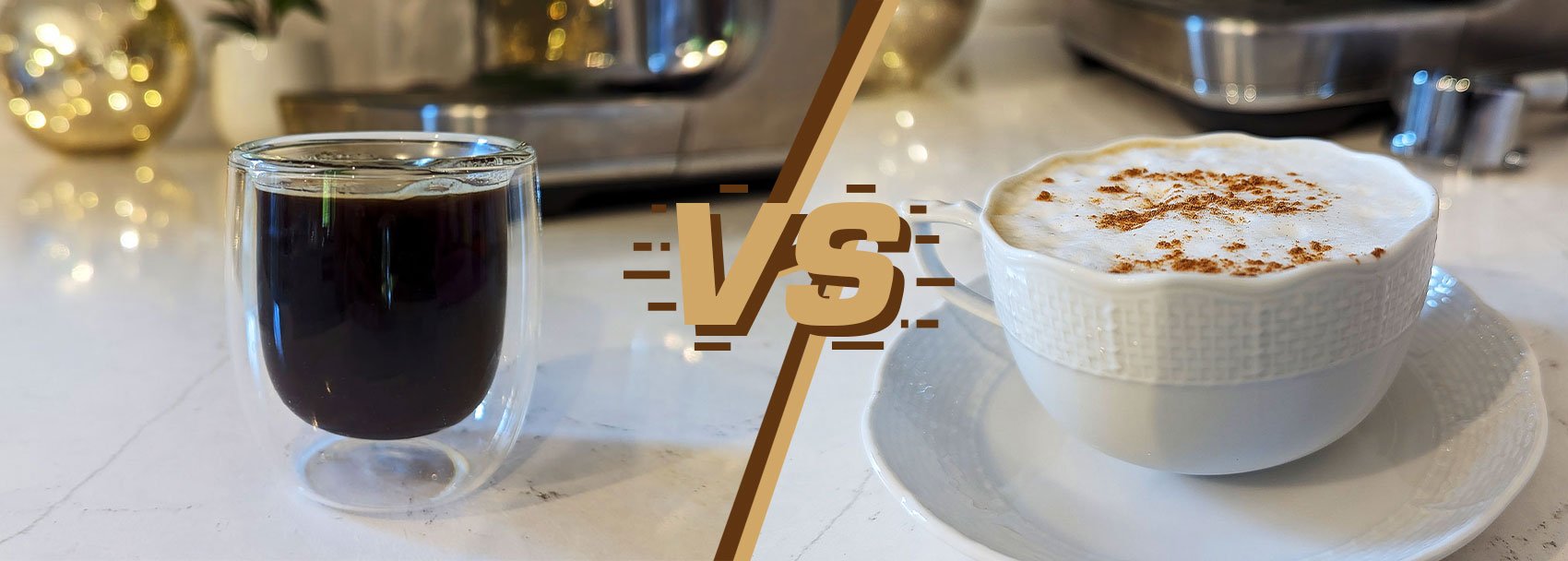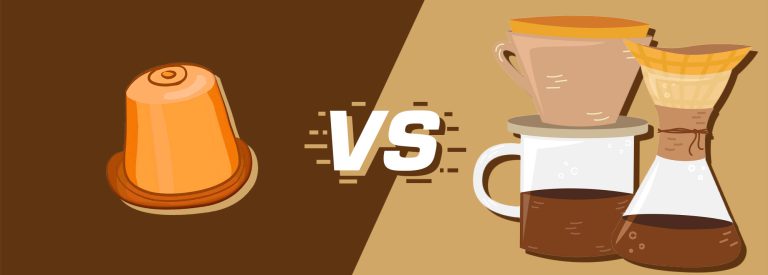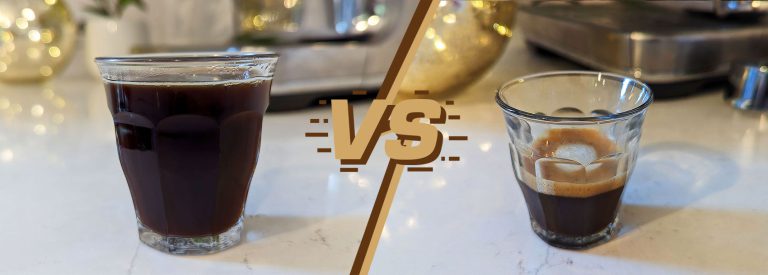Lungo vs Cappuccino: Differentiating These Brews
Lungo and cappuccino are both espresso-based coffees that are enjoyed by many, but with all of the coffee variations available at cafés and no 2 cappuccinos looking the same anymore, they can be confusing for some.
In this detailed comparison between lungo and cappuccino, I will compare their ratios, recipes, flavors, and more, so after reading, you’ll know the distinctions between these two coffee drinks.
Key takeaway: What’s the difference between a Cappuccino and a Lungo?
A Lungo is a longer extraction of espresso with a coffee-to-water ratio of 1:4 to 1:5, resulting in a 2 oz (60 ml) serving that boasts strong and slightly bitter flavors On the other hand, a Cappuccino uses a shot of espresso with equal parts steamed milk and milk froth, creating a 5 to 6 oz (150 to 180 ml) drink that strikes a balance between the strength of the espresso and the bubbly sweetness of frothed milk.
Now grab your favorite mug and let’s have a look at the details of each drink.
What is a Lungo?
Originating from Italy, the term “Lungo” translates to “long” referring to the longer extraction time or the longer volume of this brew. This coffee drink gained immense popularity across Europe, offering a unique twist to the traditional espresso by allowing more water to pass through an espresso puck. The result is a milder brew that still carries the signature flavors of an espresso.
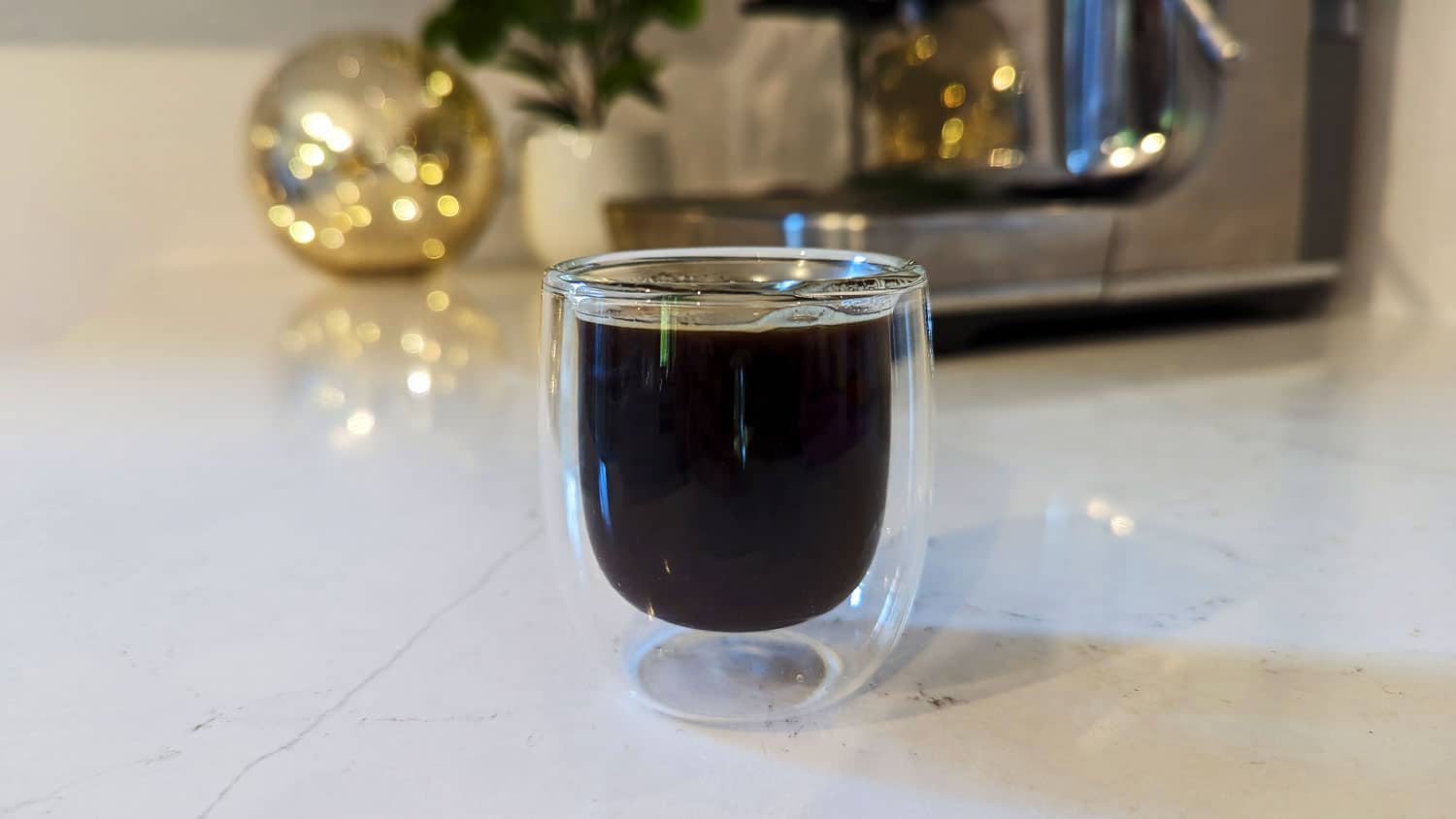
Going into details, the Lungo has a coffee-to-water ratio of 1:4 to 1:5. You can achieve this by letting the shot run longer, but that can cause extra bitterness. I prefer to make the grinds a bit coarser than espresso size, so the water flows through at around 35 seconds, but I still achieve the larger volume.
Depending on your preference, you can use 7g of traditional Italian ground coffee or opt for 9g of third-wave specialty coffee. When you order a Lungo, you can expect a serving size of around 2 oz (60 ml). A regular espresso demitasse is perfect for serving this drink, but it should preferably be the larger kind, with a capacity of 90 ml (3 US fl oz).
The Lungo blends strong and slightly bitter flavors that are not as concentrated as your regular espresso. The texture is somewhere between an espresso and an Americano. It’s more velvety than an Americano but not as thick as an espresso, giving it a balanced body.
Here’s how you can brew a Lungo at home, but these are the steps in short:
- Grind your coffee beans slightly coarser than your espresso setting.
- Use a scale and timer to measure your yield during the brew.
- Aim to stop brewing around the 35-second mark, going for a 1:4 to 1:5 coffee-to-water ratio.
Next, let’s give cappuccino a closer look.
What is a Cappuccino?
Tracing its roots back to the 17th century, the Cappuccino owes its name and legacy to the Capuchin Friar Marco d’Aviano. Over hundreds of years later, it has evolved transforming into the popular espresso-based drink we know today.
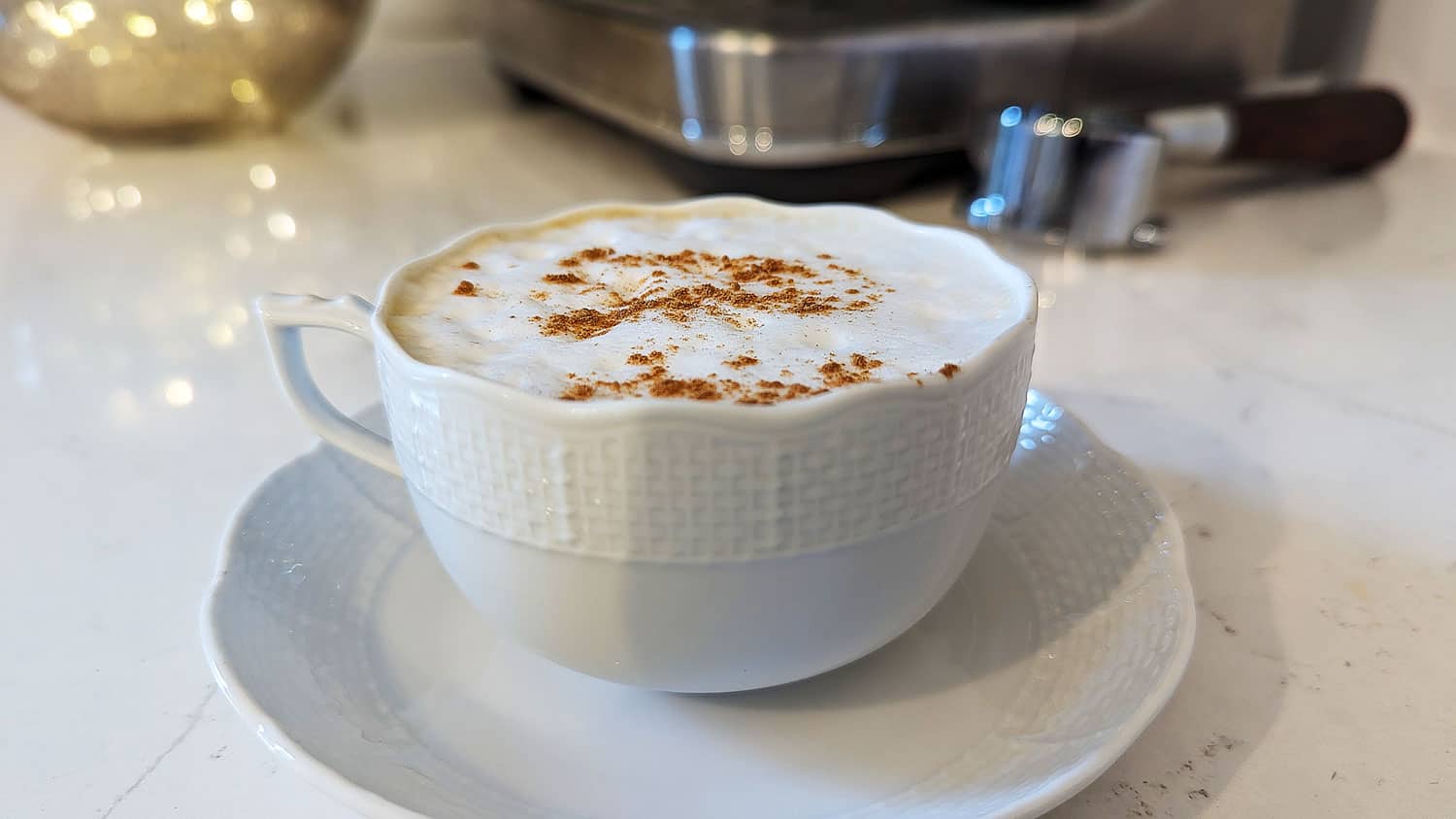
A Cappuccino uses a standard coffee-to-water ratio of 1:2 to 1:3 for the espresso, which is brewed with 7g of grounds (third-wave specialty coffee uses 9g). After pulling the espresso shot, it is combined with equal parts steamed milk and milk froth, creating a 1:1:1 ratio of its main ingredients. Most cafes add a dash of cinnamon on top, as you can see in my photo above.
The final size of cappuccino is 5 to 6 oz (150 to 180 ml), which you can serve in a cappuccino cup that can hold 5 to 6 oz (150 to 180 ml) of coffee. Oh, and if you’re watching calorie intake, the coffee part itself only has 2 calories but the added milk gives it a total of 74 calories per 150 ml cappuccino. Plus the sweetener you put into it, of course.
Talking taste and texture, the cappuccino offers a balance between the robustness of espresso with the creamy sweetness of frothed milk. The amount of macrofoam makes the mouthfeel unique, giving you a dense drink crowned with light, airy macrofoam.
Here’s a short recipe for making a Cappuccino:
- Brew a single shot of espresso as usual.
- Pour cold milk into a steaming pitcher, just until the spout’s bottom.
- Prepare the milk:
- Heat and aerate the milk to get that bubbly, frothy texture, aiming for around 160 degrees Fahrenheit.
- Or you can use any of these simpler methods to froth milk.
- Top your brewed espresso shot with the steamed milk and froth.
If you want to read the details, read my comprehensive recipe on how to make a Cappuccino.
Lungo vs Cappuccino: How Different Are They?
Here’s a side-by-side comparison of these two coffee drinks:
| Aspect | Lungo | Cappuccino |
|---|---|---|
| Taste and Texture | Strong, slightly bitter, balanced between espresso and Americano. | Bold espresso meets creamy sweetness, with an airy macrofoam. |
| Coffee-to-Water Ratio | 1:4 to 1:5 | 1:2 to 1:3 (for the espresso part) |
| Ingredient Ratio | Just coffee with more water than espresso | 1 part espresso, 1 part steamed milk, 1 part frothy milk foam |
| Typical Serving Size | 2 oz (60 ml) | 5 to 6 oz (150 to 180 ml) |
| Caffeine Content | 60-80 mg per single shot | 60-80 mg per 1 oz shot of espresso used |
| Calories | 2 calories per shot | 74 calories for a 150 ml serving |
| Acidity | Moderate | Low to moderate |
| Brewing Difficulty | Intermediate | Home barista |
| Bean Roast | Light to medium roasts | Medium roasts; dark roasts for intensity |
Now let’s get into the details of the Lungo and cappuccino:
- Ground Coffee Weight & Ratios: Both Lungo and cappuccino use 7g for a shot, and 9g for third-wave specialty coffee. The difference in Lungo is that it uses a 1:4 – 1:5 brew ratio, while cappuccino maintains a 1:2 to 1:3 ratio for its espresso. This espresso is then combined with equal parts of steamed milk and milk froth.
- Taste: The Lungo has a strong, somewhat bitter flavor but it’s less concentrated than an espresso. The texture is also not as thick, but it’s denser than the Americano.
The cappuccino is even milder, having equal parts steamed milk and froth added to the espresso. It still has the boldness of espresso though, while adding the creamy sweetness of milk. - Volume, Calories, & Caffeine: A serving of Lungo is about 60 ml, while the cappuccino is bigger in size at about 150 to 180 ml because of the added milk. This also gives a 150ml cappuccino serving a total of 74 calories, while Lungo only has 2 calories. Both drinks have 60 to 80mg of caffeine.
- Bean Roast: I use light to medium roasts when brewing a lungo because they help balance the slightly bitter profile caused by the longer extraction time. As for cappuccinos, I choose medium roasts for a balanced drink and sometimes I even brew with dark roasts to make a more intense drink.
- Steamed Milk: Unlike Lungo, cappuccinos contain steamed and frothed milk. I use whole milk, which is the authentic way to make it, but alternatives like soy, almond, or oat milk also work. Read my guide on how to steam milk to learn proper steaming techniques, but as I mentioned, simpler methods of preparing milk froth also work with the cappuccino, since you don’t need microfoam.
- Serving Suggestions: Personally, I’d rather go for an Americano or reach for the Aeropress if I want a milder coffee, not a lungo. I’m not a fan of the extra bitterness, but that’s just me. Some people love it.
When I’m sipping a cappuccino, I like sprinkling it with cinnamon on top while munching on chocolate, biscotti, or nuts.
Although both drinks have their roots in espresso, they cater to distinct taste preferences and preparation styles. Both coffees use espresso machines though, so you’ll want to use the best espresso coffee beans this 2025 for satisfying results.
With a cappuccino, you can get away with these other methods of making espresso-style coffee though.
Conclusion
If I had to choose a winner in the Lungo versus cappuccino showdown, I’d reach for the cappuccino. I enjoy its rich and creamy texture paired with the delicious blend of sweet milk and the punch of espresso.
But that’s just my vote. If you were to choose one of these coffee drinks, which one would you pick? Let me know in the comments section below.

